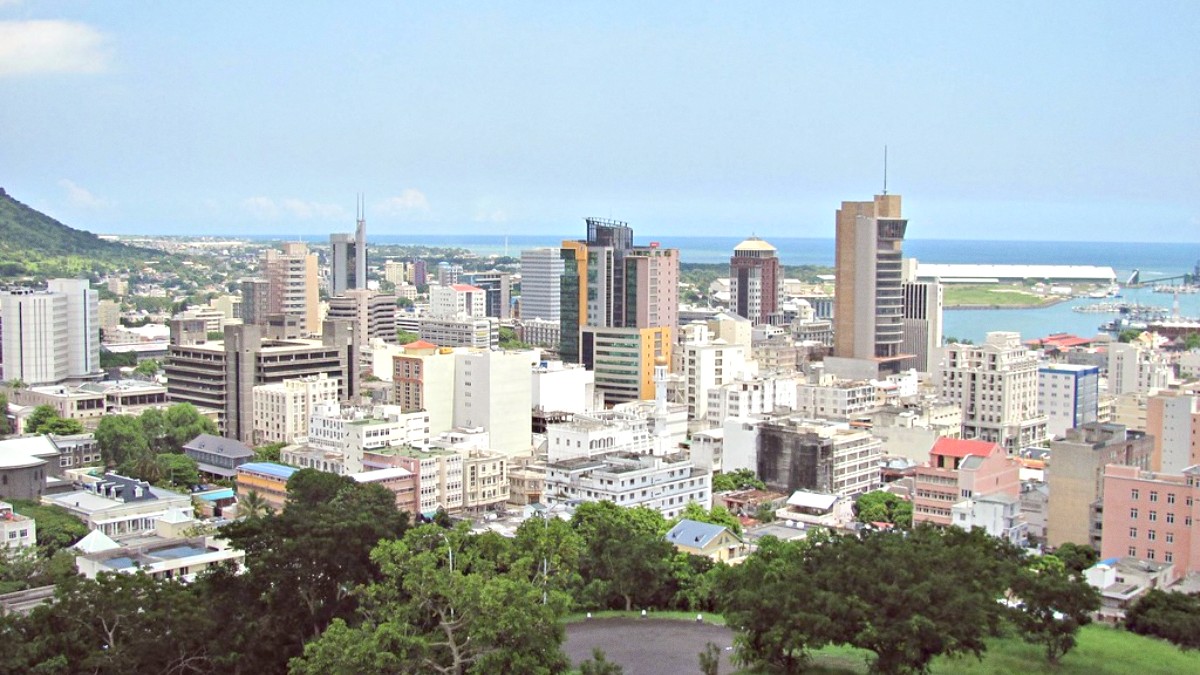
Mauritius
Port Louis has mixed influences, a direct outcome of its good position as a port. Travelers experience this blend walking through Chinatown, finding an old mosque, or tasting Indian-style street food.
The city balances its historical aspects with a forward view. New shopping areas sit near traditional markets where bargaining is part of the experience. Tall buildings stand alongside colonial structures, showing a city that values its past while building its future. Port Louis is not a sleepy island retreat, but a dynamic, busy capital.
A trip to Port Louis gives knowledge of the island beyond its coastline. It shows the nation's economic engine, its administrative core, and the authentic life of its people. This guide helps you navigate Port Louis with ease. Prepare for a city with echoes of history and discovery.
Port Louis sits on the northwestern coast of Mauritius, tucked into a natural harbor. This position on the leeward side of the island gives it a generally drier, sunnier climate compared to the wetter eastern and central regions. A crescent of mountains surrounds the city, forming a natural amphitheater. Signal Mountain to the north and Le Pouce Mountain to the east stand prominently, shaping the city's skyline.
Port Louis is at sea level, with its urban expansion into the foothills of the surrounding mountains. The city center is mostly flat, making it walkable for exploring main attractions. As you move from the waterfront, the land rises, offering elevated perspectives from places like Citadel Fort Adelaide. The city serves as a gateway to both the northern and western parts of Mauritius.
Generally drier, sunnier climate than the eastern regions.
Deep and protected, a safe haven for ships for centuries.
Signal Mountain and Le Pouce Mountain define the skyline.
Center is flat, terrain rises towards surrounding hills.
A base for island exploration to north and west.
The land features around Port Louis contribute to its climate. The mountains create a rain shadow, making conditions drier. This microclimate is noteworthy, especially during the island's winter when other parts of Mauritius might experience more rain.
The busy port area dominates the immediate coastline, with cargo ships and cruise liners frequently docking. Inland from the port, the city moves into commercial districts, historical areas, and residential zones on the lower slopes of the surrounding hills.
This compact city arrangement keeps many points of interest accessible, making a focused exploration of its diverse features possible within a single visit.
Port Louis sits nestled on the northwestern coast of Mauritius, protected by a natural harbor and framed by mountains. Its leeward position gives it a drier climate. The city is a hub for exploration, with many sights within easy reach.
Port Louis' history shows Mauritius' journey from an uninhabited island to a multicultural nation. Its story began in the early 18th century when the French East India Company established it as a port. Named for King Louis XV of France, it quickly grew into an important naval base and trading hub on the route between Europe and Asia.
A event in the city's history, and Mauritius', was the abolition of slavery in the British Empire in 1834. This led to a new system of indentured labor, mainly from India, for sugarcane plantations. Aapravasi Ghat in Port Louis served as the main immigration depot. Many indentured laborers passed through this site, taking their first steps on Mauritian soil. This experience shaped the island's population, culture, and social structure. Today, Aapravasi Ghat is an UNESCO World Heritage Site, a strong memory of this migration.
The French period left lasting architecture, with many colonial buildings still standing.
British control from 1810 allowed French language and law to continue, creating an unique European blend.
Indian indentured laborers shaped demographics and culture, along with African contributions.
Under British rule, Port Louis expanded as a commercial hub. Citadel Fort Adelaide's 19th-century building shows the strategic role the British saw in guarding the city and its harbor. The Champ de Mars Racecourse, from 1812, also dates from this time.
Port Louis has an active atmosphere, especially during weekdays. Locals handle their daily routines, creating a genuine sense of place. The pace here is faster than elsewhere on the island.
The city's main attractions are close to each other, making walking an effective exploration method. From Aapravasi Ghat to the Blue Penny Museum, and the Central Market, each site is a distinct experience.
Port Louis is a place for street food, showing its culinary variety. Dholl puri, gateaux piment, and boulettes sell from vendors throughout the city, giving delicious and inexpensive meals.
Port Louis is a bustling city, a hub of culture and commerce, distinct from the island's resort areas.
A deep history shaped by French, British, Indian, and African influences, visible in its sites and people.
A heaven for street food and diverse local cuisine, offering authentic tastes at low prices.